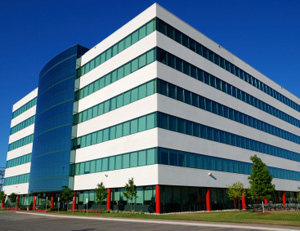Energy Efficiency: Not Just For Homes

When you think of energy efficiency, you probably think of turning off the lights when you leave a room, replacing incandescent light bulbs with CFL’s, and running the dishwasher at off-peak hours. And while these are all great steps that we can all take to improve the energy efficiency of our homes, they are only half of the equation.
Don't Forget Commercial & Industrial Energy Consumption
In 2012, 50% of the energy usage in the United States came from commercial and industrial buildings, at a cost of over $400 billion. There are lots of ways commercial and industrial buildings can improve efficiencies that won’t break the bank, and at the same time, they will help to create jobs and strengthen the economy.
In 2011, President Obama introduced the Better Buildings Initiative. The focus of the initiative is to make commercial and industrial buildings 20% more efficient by 2020. The initiative also encourages private sector investment in energy efficiency. Better Building strategies include:
Training for Commercial Energy Efficiency
The Building Technologies Office in the Department of Energy recognizes that there are various career fields that will help commercial and industrial buildings achieve maximum energy efficiency. These include building owners, unions and most importantly, service providers - including Commercial Energy Auditors. For a building to improve its energy efficiency, it needs to know where energy is being lost, and what the best ways to improve efficiency are. Building facility managers can be trained to run their buildings more efficiently, directly through energy management, electrical systems and illumination, heating systems, air handling and water treatment, and refrigeration systems.
Leading by Example: Energy Efficient Government Buildings
The federal government is improving its own energy efficiency, setting the example for other businesses to follow. Given that the government owns and operates nearly 3 billion square feet of federal building space, it only makes sense that it should take the lead in reducing energy costs. One of the fastest and easiest ways to do this is to improve the energy performance of federal government buildings. This won’t just have positive environmental impacts, but it will stimulate job growth in the construction and energy sectors.
Financial Incentives
The government is exploring different financial incentives to make it cost effective for commercial and industrial buildings to improve their energy efficiency. These include both tax deductions and tax credits for building owners and real estate investors to make their buildings more energy efficient. Also, the Qualified Energy Conservation Bonds (QECBs) make it easy for state and local governments to make low-cost financing available for companies who improve efficiencies.
Ultimately, increasing energy efficiency, saving money and stimulating the economy will be something that will affect not just homeowners, but business owners, building operators, energy auditors and everyone interested in bettering the environment and saving money.

